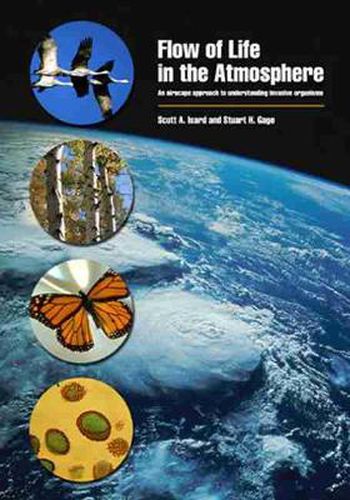Readings Newsletter
Become a Readings Member to make your shopping experience even easier.
Sign in or sign up for free!
You’re not far away from qualifying for FREE standard shipping within Australia
You’ve qualified for FREE standard shipping within Australia
The cart is loading…






As we enter the twenty-first century the ultimate objective of environmental management programs should be to manipulate ecosystems so that they fulfill the needs of humans and at the same time maintain their integrity. In this new ground-breaking work, Scott Isard and Stuart Gage look at the importance of anticipating consequences of the aerial flow of biota as new strategies to understand and manage our environment.
A sound understanding of the biological and meteorological interactions that govern the movement of organisms in the atmosphere is a prerequisite to the development of successful management strategies for terrestrial ecosystems. Inflows and outflows of organisms to and from habitats can be as important as birth and death rates in regulating the dynamics of populations. Isard and Gage focus on predicting events that destabilize relationships among organisms and between populations and their environment.
This preventive management strategy is based on the premise that the ability to understand and predict dynamics of populations in an ecosystem allows for optimal and integrative use of a wide variety of methods to enhance human resource production and to reduce harmful impacts of diseases and organisms on humans. It is a paradigm that focuses on manipulating ecosystems to maintain the long-term stability of their diverse populations and the interactions among organisms and their environment. In many ecological systems, sudden and dramatic population fluctuations often result from movement of biota from one habitat to another. The design of grand plans to manage ecosystems without concern for the inflow and outflow of organisms associated with those ecosystems could be tragic.
$9.00 standard shipping within Australia
FREE standard shipping within Australia for orders over $100.00
Express & International shipping calculated at checkout
As we enter the twenty-first century the ultimate objective of environmental management programs should be to manipulate ecosystems so that they fulfill the needs of humans and at the same time maintain their integrity. In this new ground-breaking work, Scott Isard and Stuart Gage look at the importance of anticipating consequences of the aerial flow of biota as new strategies to understand and manage our environment.
A sound understanding of the biological and meteorological interactions that govern the movement of organisms in the atmosphere is a prerequisite to the development of successful management strategies for terrestrial ecosystems. Inflows and outflows of organisms to and from habitats can be as important as birth and death rates in regulating the dynamics of populations. Isard and Gage focus on predicting events that destabilize relationships among organisms and between populations and their environment.
This preventive management strategy is based on the premise that the ability to understand and predict dynamics of populations in an ecosystem allows for optimal and integrative use of a wide variety of methods to enhance human resource production and to reduce harmful impacts of diseases and organisms on humans. It is a paradigm that focuses on manipulating ecosystems to maintain the long-term stability of their diverse populations and the interactions among organisms and their environment. In many ecological systems, sudden and dramatic population fluctuations often result from movement of biota from one habitat to another. The design of grand plans to manage ecosystems without concern for the inflow and outflow of organisms associated with those ecosystems could be tragic.